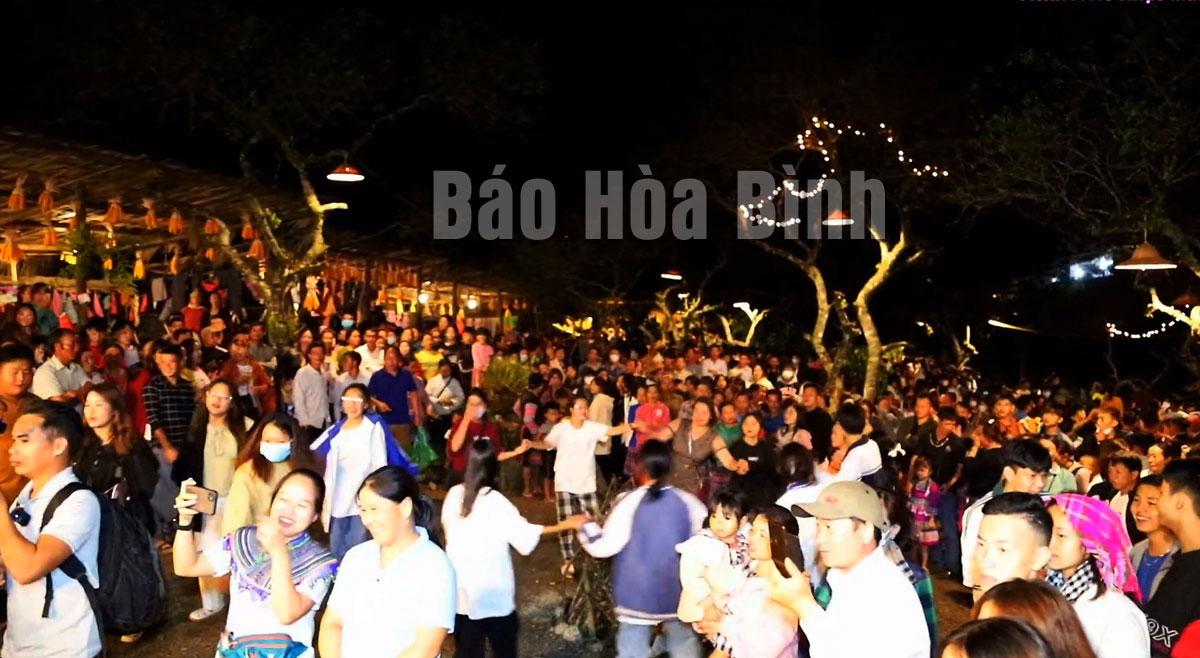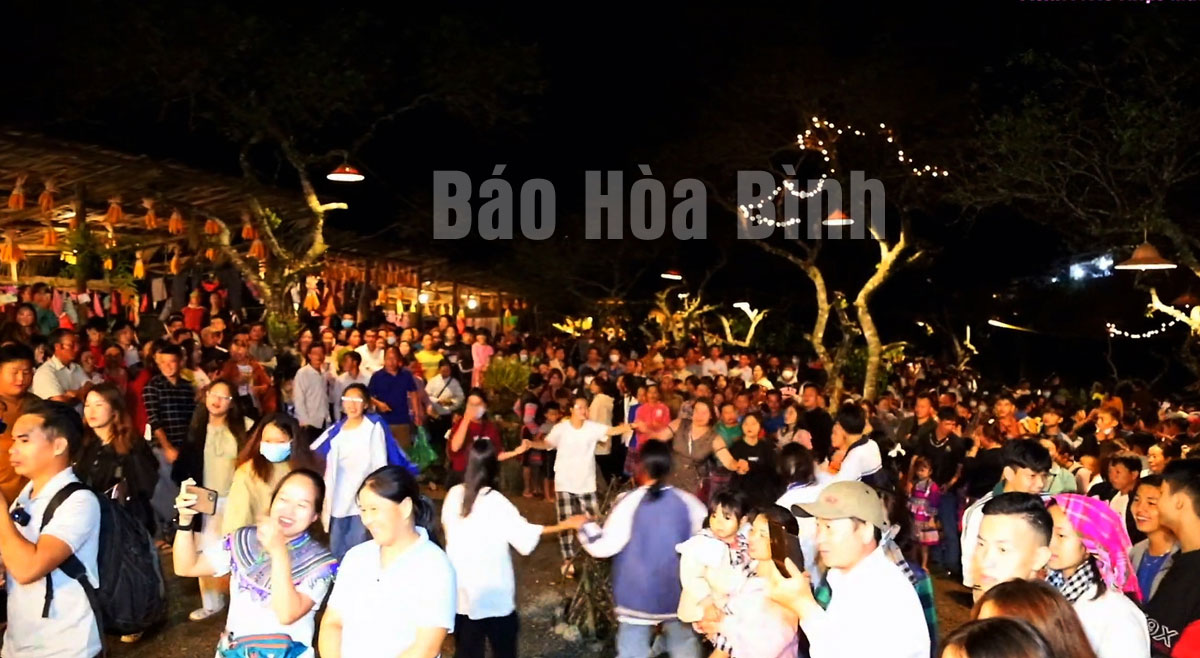
(HBO) – Since 2008, Pa Co commune in Mai Chau district has become a vibrant tourist destination, attracting a large number of domestic and international travelers thanks to its unique and attractive products.
Thousands of tourists experience the Mong cultural exchange night market in Mai
Chau district’s Pa Co commune every Saturday night.
Sung Y Do, the owner of "Mong Space”, which is considered a cultural space of
the Mong ethnic people in miniature, said she created the space with a desire
to preserve the cultural beauty of her community.
Visitors to Mong Space will be impressed by stone fences and traditional
housing architecture which is close to nature. They will also have a chance to
try interesting things such as picking tea buds, bathing and soaking feet with
herbal leaves.
Costumes and jewelry of Mong women which were made hundreds of years ago, as
well as flute and some items from ancient times including oil lamps and
baskets, are on display at the Mong Space.
Along with the development of the tourism economy, there are six homestays in
the commune, meeting the accommodation demand of visitors. Among them, A Pao
Homestay is the most favorite destination as it focuses on preserving the
unique identity of the Mong people.
Hua Thanh Tung, a tourist from Hai Duong province said his family and friends
were satisfied when staying at A Pao Homestay, a Mong-style accommodation.
"We enjoy our stay at A Pao Homestay a lot”, he said, adding that the host was
also very enthusiastic to take them to experience other activities, such as
hunting clouds or visiting traditional craft villages and fairs.
Pa Co village welcomes guests all year round. It is mostly crowded on weekends
and public holidays. Particularly, the Mong ethnic cultural exchange night
market, which is organised every Saturday, has become a unique and attractive
tourist product.
Phan A Song, Chairman of the commune Farmers' Association, said that the night
market model gives visitors a sense of the highland market space. They can
enjoy Mong dance performances and participate in cultural exchanges. It also
offers an opportunity for them to buy local specialities, and experience
traditional cuisine, folk games and entertainment with Mong ethnic identity.
With unique products, Pa Co commune's tourism has left many imprints on
visitors and is one of the provincial tourist destinations that attracted the
most visitors on the occasion of the country’s National Day (September 2).
It welcomed over 8,000 visitors during the National Day holiday from September
1-4./.
A diverse chain of eco-tourism and resort destinations concentrated in Hoa Binh city and the districts of Tan Lac, Da Bac, and Luong Son… Along with the launch of several key high-quality resort tourism projects, these developments have reshaped the landscape and enhanced the appeal of Hoa Binh as a travel destination.
Boasting diverse terrain, a mild climate, and rich natural resources, Cao Phong district is increasingly asserting its place on Vietnam’s tourism map, attracting both domestic and foreign visitors. The district is renowned for its stunning landscapes, majestic mountains, a crystal-clear hydropower lake, and the unique cultural identity of local ethnic groups.
With its pristine landscapes, unique cultural heritage of Muong ethnic minority, and an expanding range of visitor experiences, Tan Lac district of Hoa Binh has fast become a captivating destination for both domestic and international tourists.
Until now, Sung village in Cao Son commune, Da Bac district remains the only Dao ethnic community in Hoa Binh province to develop a community-based tourism model. Beyond its untouched natural landscapes, cultural identity serves as the cornerstone attraction for visitors.
Alongside the diverse cultural identities of the Kinh, Muong, Tay, Thai, Dao, and Mong ethnic people, Hoa Binh province is also renowned as the "capital" of the northwestern Vietnamese cuisine, offering unique and distinctive dishes. At festivals, during Lunar New Year (Tet), or on significant family or community occasions, special dishes are prepared, leaving a lasting impression on visitors.
A Phong Linh (Yellow Tabebuia) flower garden in Thang village, Thach Yen commune, Cao Phong district is currently in full bloom, drawing a large number of visitors.



